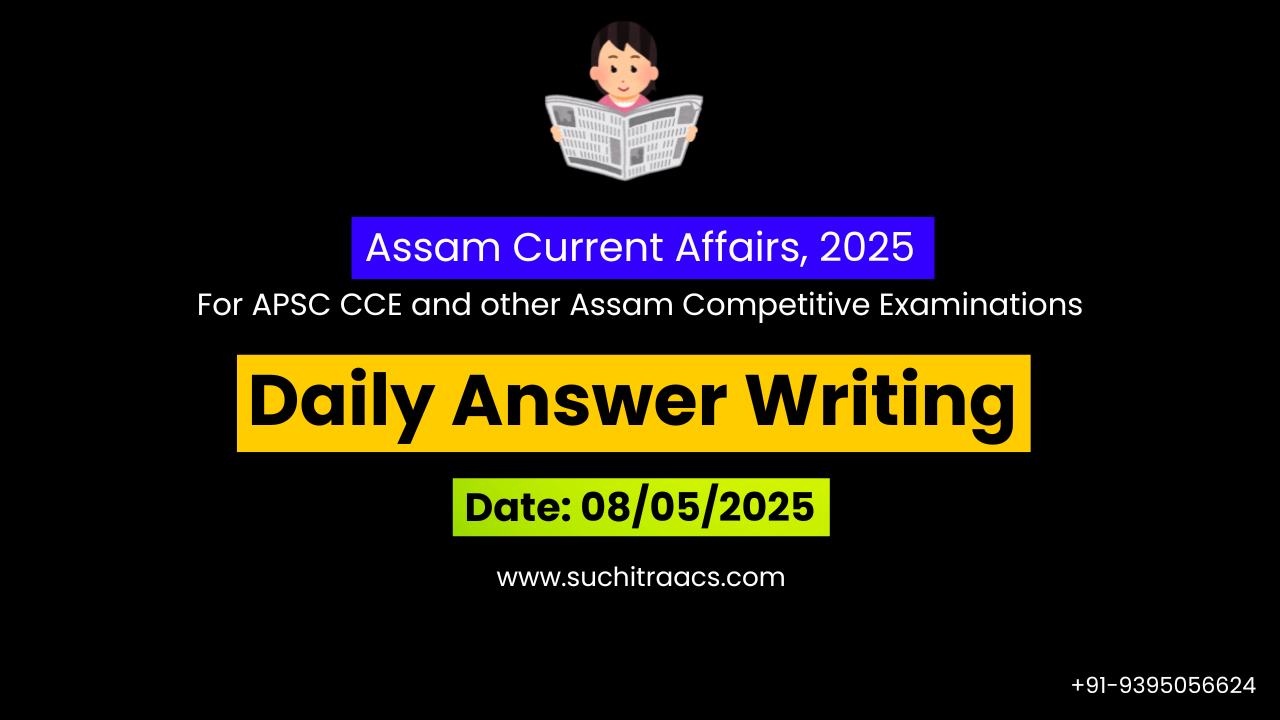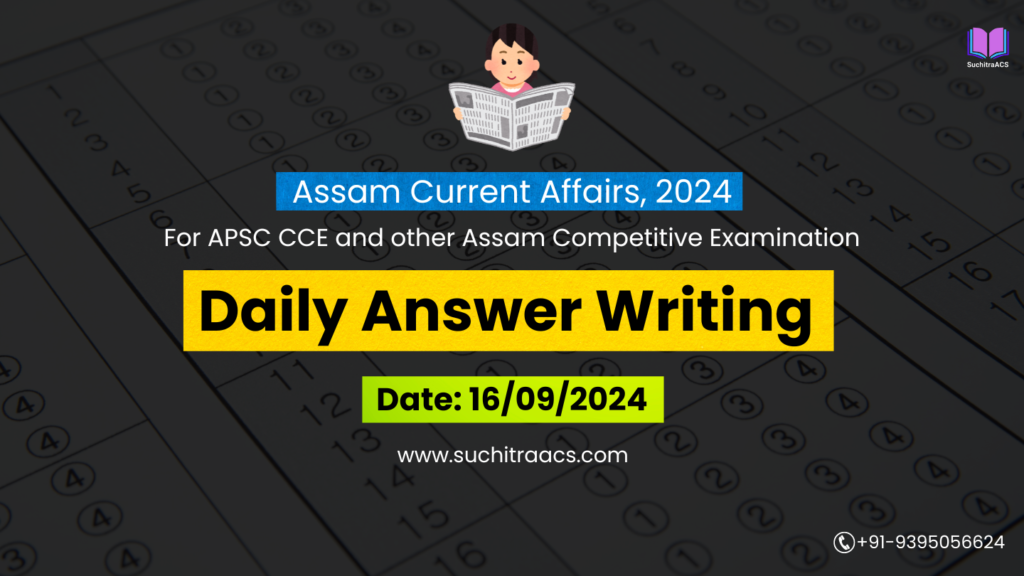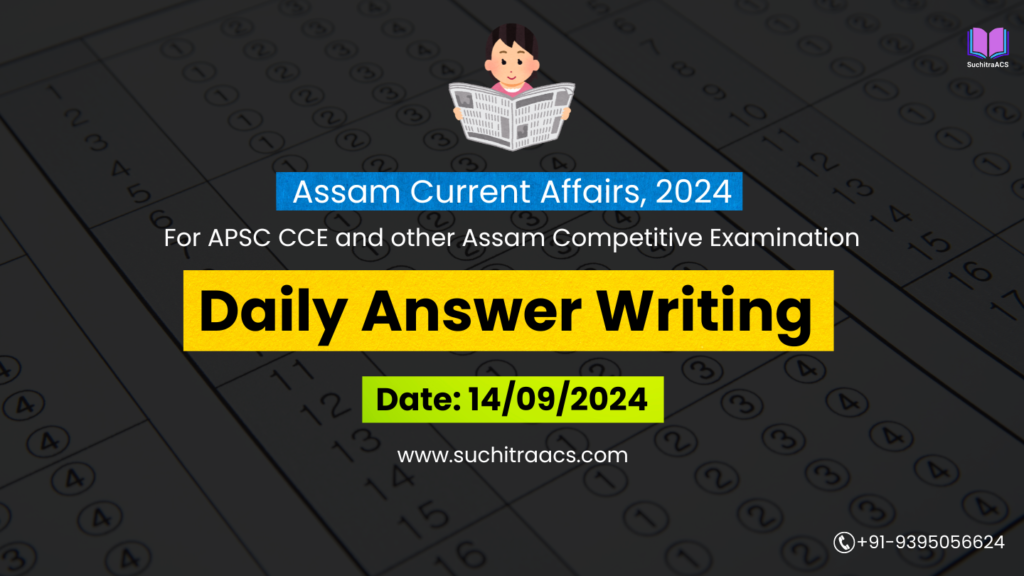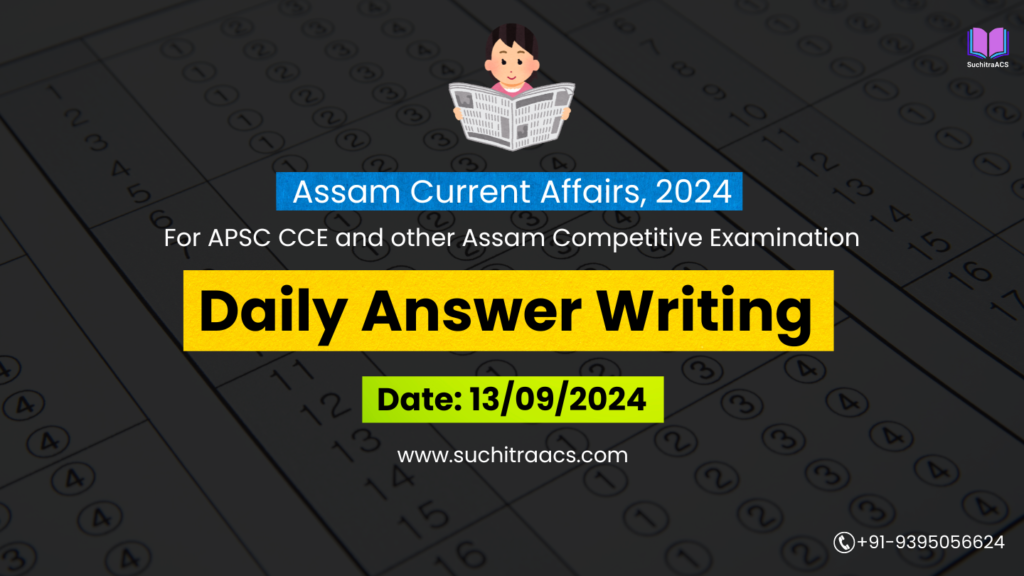APSC Answer Writing (Daily) based on Assam Tribune – 08/05/2025
For APSC CCE and other Assam Competitive examinations aspirants, practicing Daily Answer Writing is vital. This blog covers the most important Main question and its model Answer from the Assam Tribune today (08-05-2025).
📝 GS Paper 3 – Internal Security | India’s Security Challenges | Role of Security Forces
Q. India’s response through Operation Sindoor marks a shift in its counter-terror strategy. Analyse the significance of this operation in the context of India’s evolving security doctrine. Also, examine the challenges associated with such cross-border precision strikes.
✅ Model Answer:
Introduction:
India’s Operation Sindoor, launched in May 2025, was a calibrated, precision strike against terror camps in Pakistan and PoK, following the brutal Pahalgam terrorist attack. The operation targeted terrorist infrastructure without escalating to full-scale conflict. This marks a clear evolution in India’s security doctrine—from passive deterrence to active counter-force retaliation.
🔍 Significance of Operation Sindoor in India’s Security Doctrine:
- Assertive Posture Without Escalation:
The use of drones and missiles shows that India is willing to engage below the threshold of conventional war—a middle path between inaction and war. - Emphasis on Surgical Precision:
Like the Balakot (2019) and Uri (2016) responses, Operation Sindoor highlights India’s improved surveillance and precision strike capability. - Legitimacy Through Proportionality:
The operation avoided targeting Pakistani military assets, thereby adhering to international law (UN Charter Article 51) and presenting India as a responsible actor. - Information and Psychological Warfare:
India proactively countered misinformation campaigns from adversarial platforms, leveraging credible media, transparency, and symbolism (e.g., naming the strike “Sindoor”). - Integration of Women in Strategic Roles:
The operation briefing was led by senior women officers, reflecting a gender-progressive shift in defence leadership.
⚠️ Challenges of Cross-Border Precision Strikes:
| Dimension | Challenge |
| Strategic | Risk of retaliation or miscalculation escalating to broader conflict. |
| Diplomatic | Need to maintain global support while asserting national sovereignty. |
| Operational | Requires real-time intelligence, accuracy, and technological superiority. |
| Civilian Risk | Potential for collateral damage, especially in dense border areas. |
| Nuclear Overhang | Tensions with a nuclear-armed adversary require tight escalation control. |
🛠️ Recommendations & Way Forward:
- Enhance ISR Capabilities: Invest in drones, satellites, and AI-based surveillance.
- Build Legal Consensus: Proactively justify strikes under the global ‘right to self-defence’ clause.
- Civilian Protection Systems: Improve border warning mechanisms to reduce civilian casualties from post-strike shelling.
- Regional Diplomacy: Counterbalance hard power with diplomatic outreach to maintain regional peace.
- Strategic Doctrine Codification: Create a clearly articulated framework for future cross-border counter-terror operations.
🧩 Conclusion:
Operation Sindoor represents a mature, calibrated evolution in India’s counter-terrorism doctrine—balancing firmness with restraint. It signals to adversaries and the international community that India will not tolerate cross-border terrorism, while remaining committed to responsible statecraft.
✨ Looking for top-quality APSC Mains Guidance with Personalised Mentor?

🔔 Join Our WhatsApp Study Group!
For exclusive access to premium quality content, including study materials, current affairs, MCQs, and model answers for APSC CCE and other Assam competitive exams.
Click here to join: SuchitraACS Study WhatsApp Group
📚 Want to know more about SuchitraACS’s most affordable courses?
Click here to know more: SuchitraACS Courses for APSC CCE and Assam Competitive Examinations




